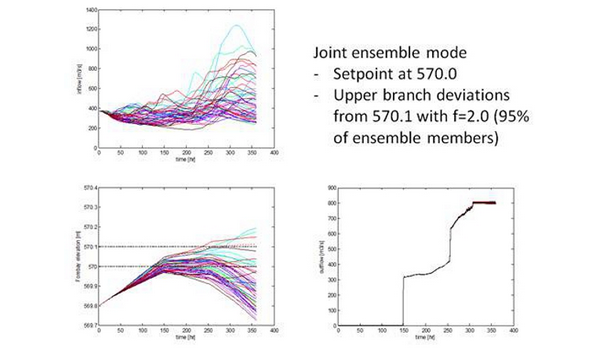Application of Chance Constrained Stochastic Optimization for Mitigating Downstream Flood Risks

Application of Chance Constrained Stochastic Optimization for Mitigating Downstream Flood Risks
Ensemble forecasting is a growing field in the operation of multi-purpose reservoirs and mitigation of flood risks in downstream river reaches. The assessment of uncertainty over the prediction horizon provides added value to the operational flow forecasting system. It provides probabilistic inflow forecasts which, combined with decision support systems, determine optimum release strategies. One way of doing this is through scenario tree-based stochastic optimization. The representation of the ensemble forecasted is converted into a scenario tree and optimized based on an adaptive multi-stage stochastic optimization.
Typical inequality constraints applied over this problem require a full compliance of each ensemble’s trajectory and neglect the uncertainty distribution. We propose the application of chance constrained optimization to overcome such problem, allowing a more flexible approach that does not depend on the number of ensembles but rather on the distribution of uncertainty. This technique is used to compute release trajectories of the reservoirs over a finite forecast horizon of up to 14 days by integrating a nonlinear gradient-based optimization algorithm and a model of the water system. The latter consists of simulation components for pool routing and kinematic or diffusive wave models for the downstream river reaches including a simulation mode and a reverse adjoint mode for the efficient computation of first-order derivatives.
The framework has been implemented for a reservoir system operated by the Brazilian Companhia Energética de Minas Gerais S.A. (CEMIG). We present results obtained for the operation of the Tres Marias reservoir in the Brazilian state of Minas Gerais, with a catchment area of near 55,000 km2. The focus of our discussion is the impact of chance constraints on the optimization procedure and its flexibility for extending the number of ensembles forecasted, thus providing a more accurate representation of uncertainty. We compare the performance of the above-mentioned optimization techniques and conclude the usefulness of implementing chance-constrained optimization in operational flow forecasting systems.

